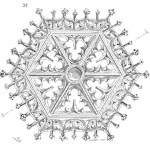
Technical drawings and electrical specifications often include tolerances.
The range of values allowed for a particular aspect of the part.
Reliability engineers do not set the tolerances, yet we should both understand and influence them.
A critical element of design for reliability is the creation of a robust product.
It is not just robust in the end use, your product should also be robust to the variability that will occur during manufacturing and transportation.
A robust product survives variations in supplied component values along with the vagaries of environmental stresses.
Tolerances are not just a range of allowed values for components such that the final assembly will function.
They reflect the range of variability allowed in component values resulting in a reliable product for the customer.
Inputs to tolerance analysis
Design intent
The overarching concept for the product.
This includes the problem this product solves, plus how it should go about doing so.
There are many ways to convey people, the design intent will provide a focus for the solution.
- The design intent also describes the customer experience. The feel of the product translates into material selections and surface texture, for example.
- The design intent may discuss emotional responses the should occur when using a product.
- The design intent provides the consistency to the delivery of the product functions.
- The design intent guides the creation of tolerance policy.
Functional design
The design of the product may include:
- The industrial design or the look and feel
- The electrical design,
- The mechanical design
- The software and firmware design
- The user interface design
Each element provides the means to deliver the desired function.
Initially, the focus may be to get the design to work. Prove the ability to deliver the desired results.
We often assume there will be no variation when focused on ‘just get it to work’ phase of the design.
Manufacturing allowances
The selection of materials, attachment methods, and assembly methods, all begin to define the initial sources of variation the product will encounter.
Stamping or molding material to create a part results in different ranges of variability.
Different solutions for a specific part of design may have different ranges of variability, with similar ranges in price.
The set of tradeoffs and allowance intermingle with the initial design.
Selection a metal enclosure may solve structural and electromagnetic emission (EMI) design challenges. Yet, metal enclosures are either expensive to form the desired shapes or may limit industrial design aspects.
Selecting a polymer may solve the industrial design problems, yet require an added element of the design to mitigate EMI issues.
Some materials are easier to work with during assembly.
Some are conducive to efficient manufacturing processes. Each choice during the definition of the design and manufacturing process limit or enhance the eventual reliability.
Each choice bounds what is feasible for tolerances.
Manufacturing variation
No two manufactured systems are the same.
Are they close enough to render the differences insignificant? Or, not?
Materials, machinery, and humans each add a bit a difference to each product produced.
While no two 100 ohm resistors are identical, and that variability may be important to the eventual performance of a product.
The tolerance considered and defined in the design process permits the naturally occurring variation to occur and the design still works.
No two holes are the same dimension, yet if within the specified tolerances it doesn’t matter to the functional performance or assembly capability.
To set a tolerance properly requires knowing the expected variation the manufacturing process will contribute.
Repair & maintenance variation
The amount of lubrication apply from month to month will vary.
The ability to visually detect structural cracks varies by person. The ability to apply a set torque varies by a torque wrench.
Maintained systems will change with each service encounter.
Equipment maintenance may or may not occur in a factory type setting.
The alignment of two features within a factory jig may make the fastening quick and easy, whereas on the factory floor without the alignment jig, it may be impossible.
Setting tolerances should consider the many sources of variation, including that which occurs during maintenance.
Cost and technology limitations
Requiring tight tolerances may require expensive materials and manufacturing processes, thus cost more.
Some materials are just not physically able to maintain tight tolerances. There is a lower limit to what is possible.
Just because the design team can write a tolerance doesn’t mean it is the right tolerance. The tolerances specified must also meet the budget constraints.
Plus they have to be actually possible to achieve.
Reliability and aging
Finally, the setting of tolerances within the design should consider the effects of use and aging.
The initial set of conditions, even when all within specified tolerances, will likely not remain the same over time.
Creep, diffusion, corrosion, and wear are just a few of the effects that change dimensions, strength, etc.
Materials and components change over time.
Setting tolerances that account for these changes permits the as new performance even after 20 years of hard driving for your city’s taxi fleet.
Summary
The reliability of a product is in large part determined by the initial design.
Likewise, it is enhanced by the careful consideration of the myriad of factors contributing to variation that impacts product performance.
What have I missed? What else contributes to the proper setting of tolerances?
Please leave a comment and I’ll update the article so it contains a complete list.
Related:
Purpose of Tolerances (article)
Tolerance Specifications Impact on Reliability (article)
Reliability and Tolerance Analysis (podcast)
Leave a Reply